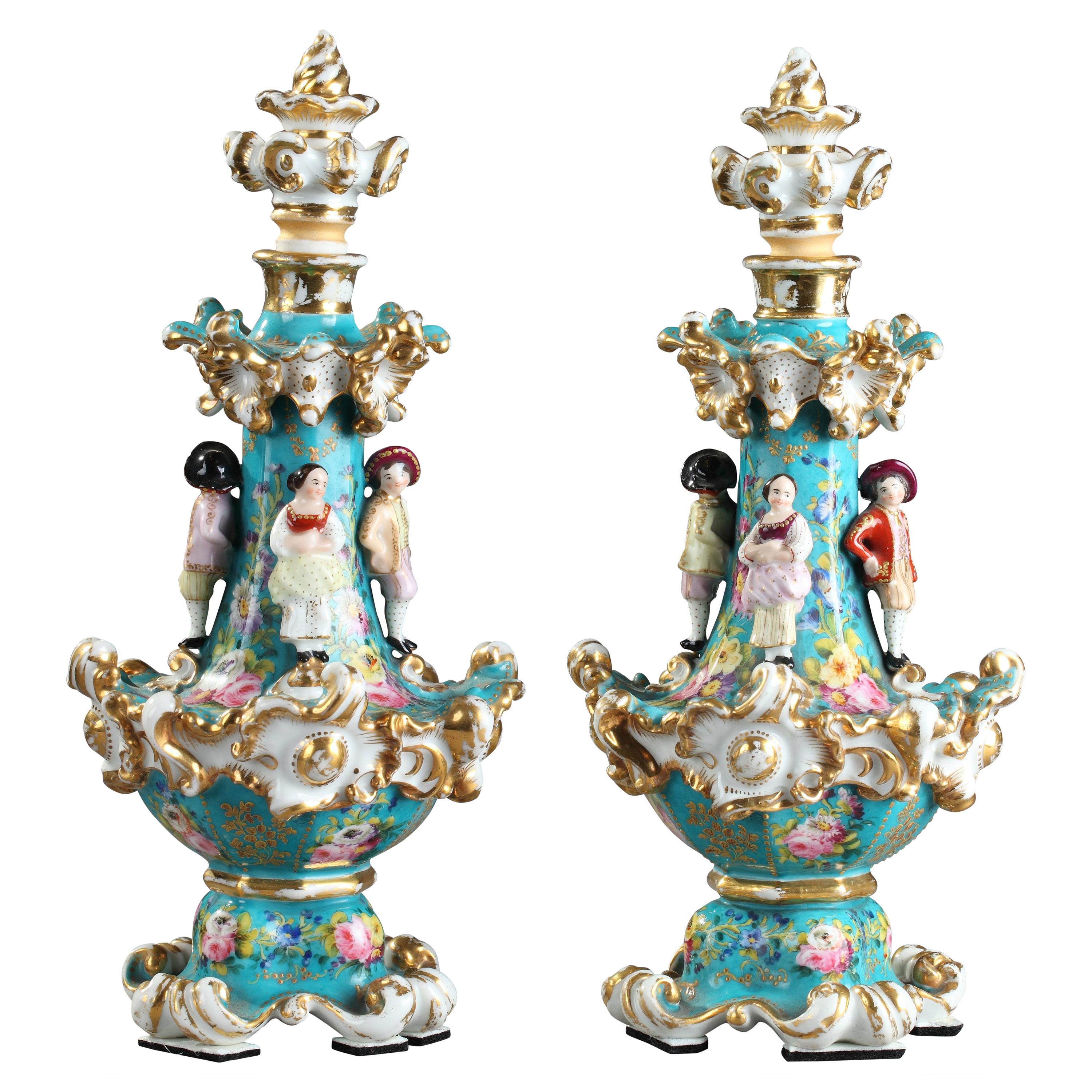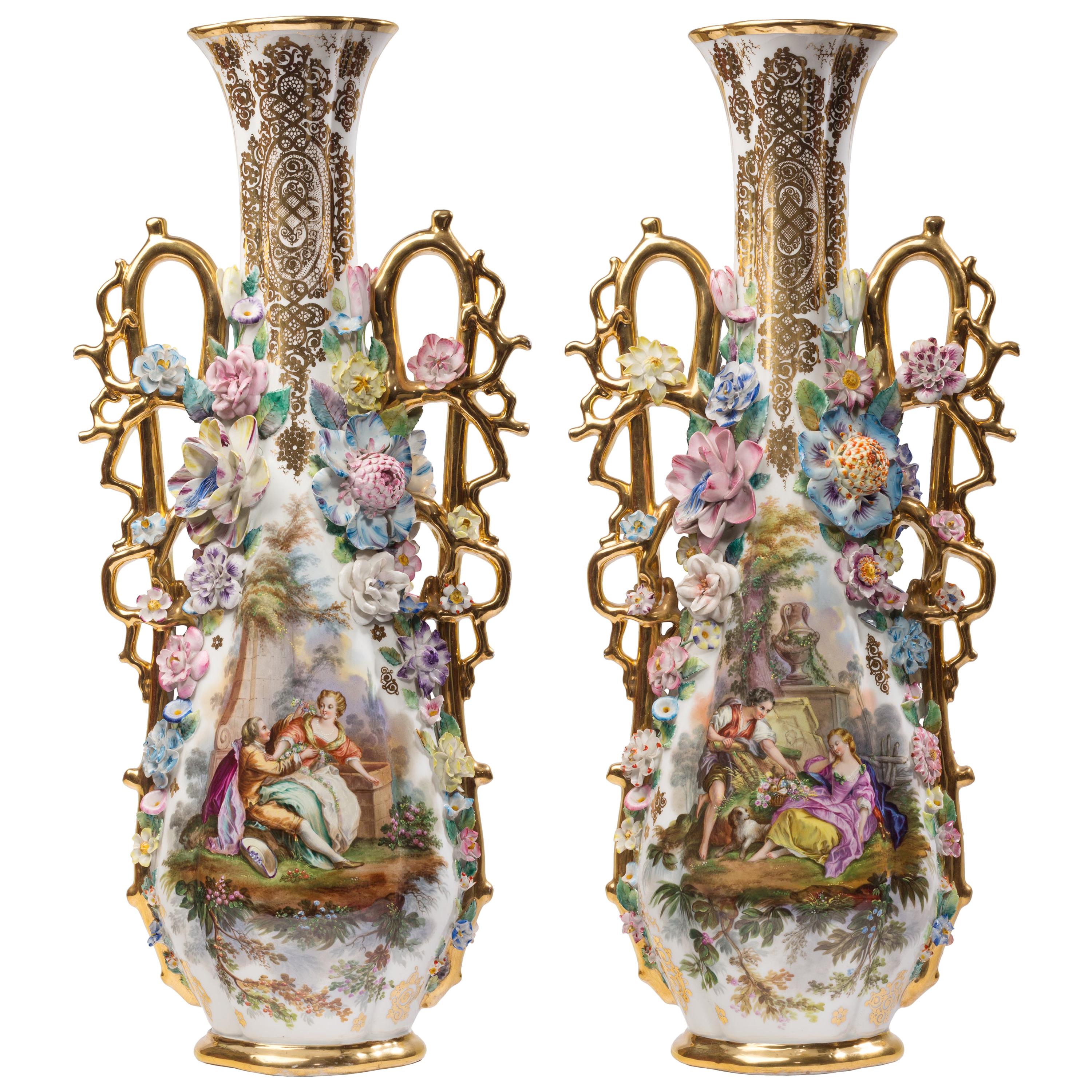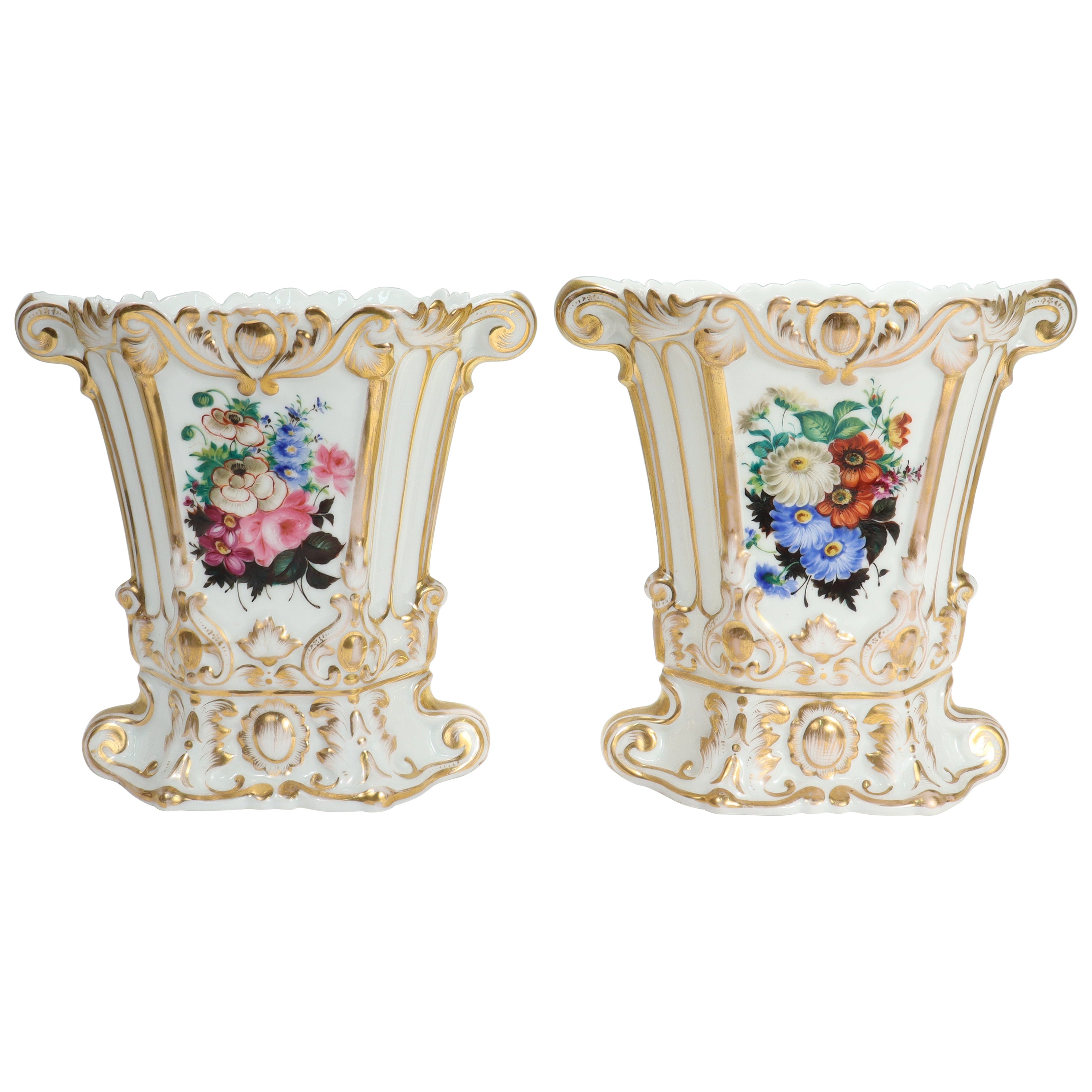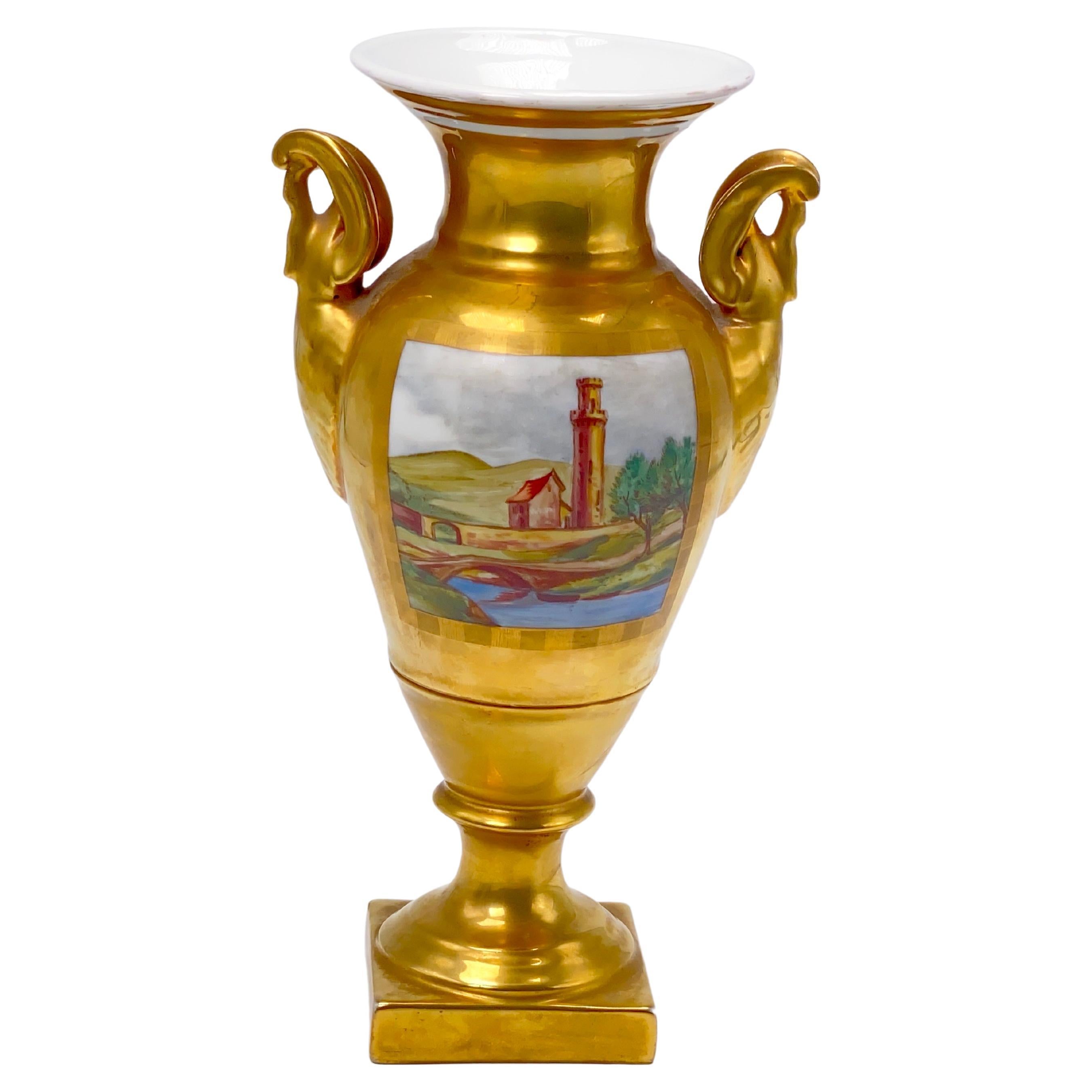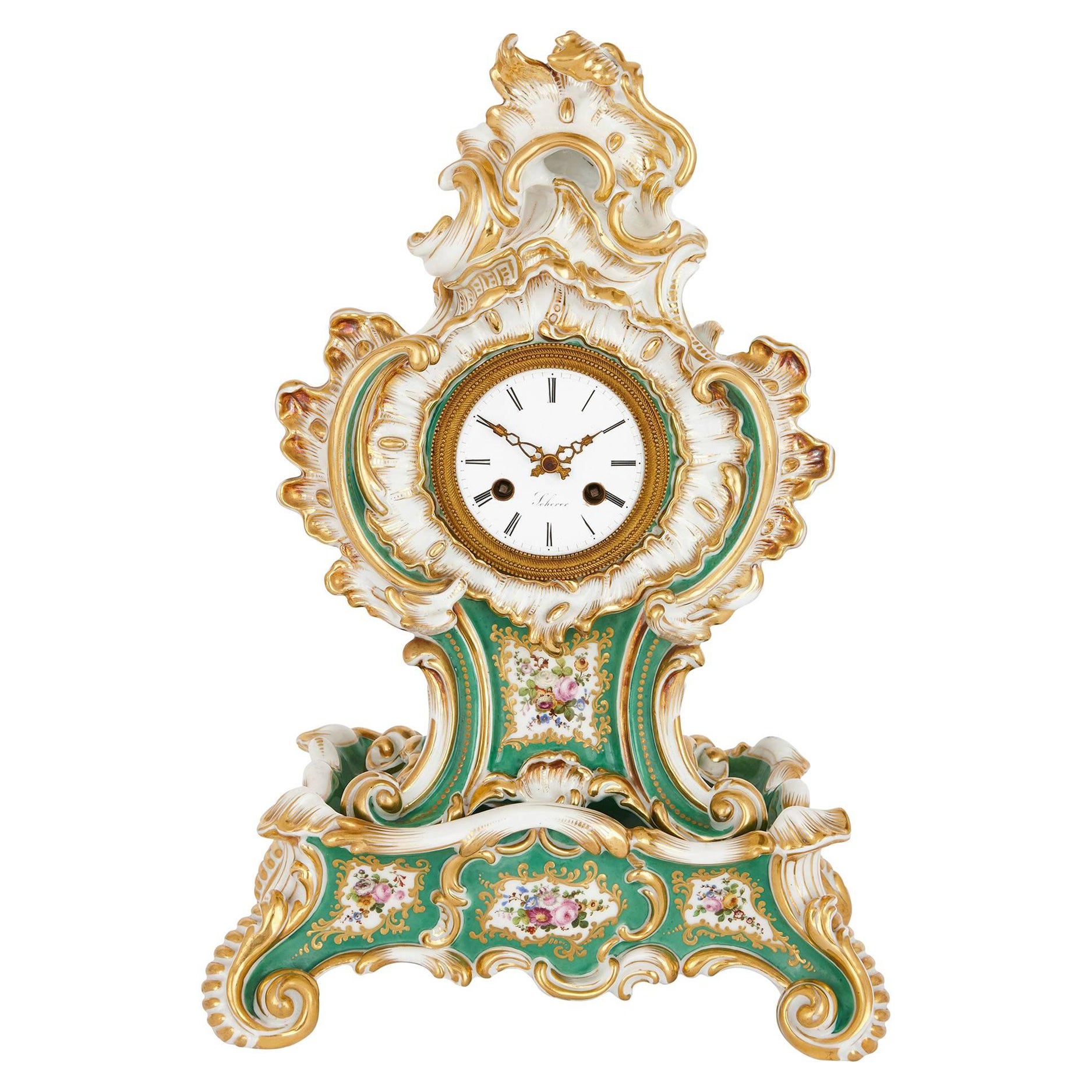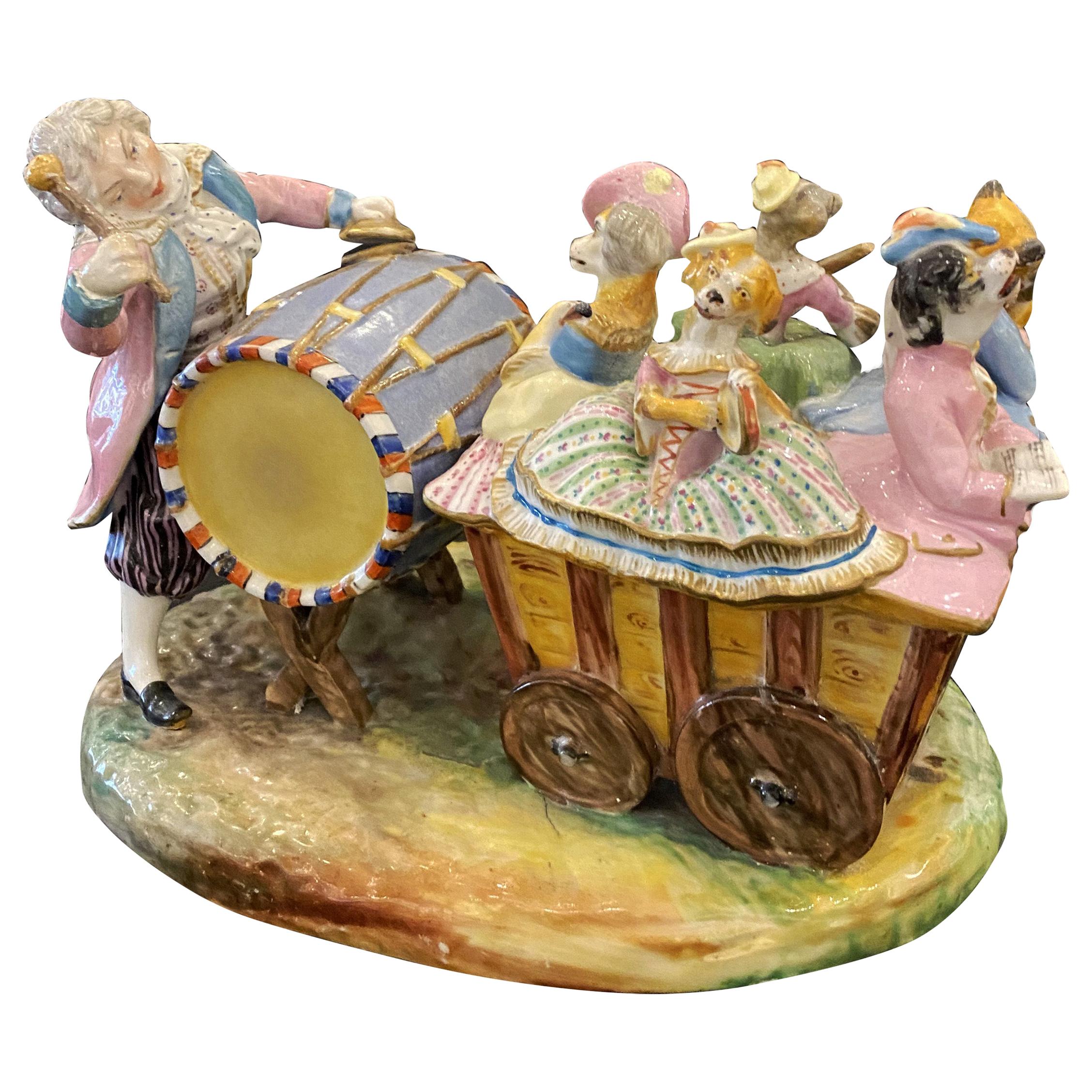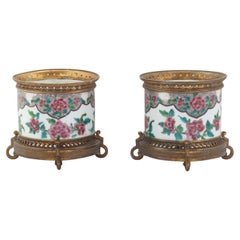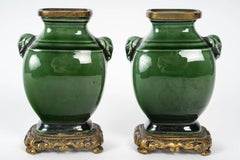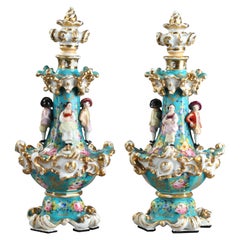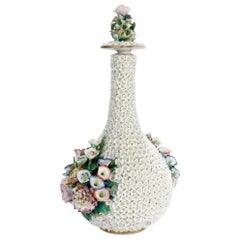
A Jacob Petit Porcelain Pair of Scent-Bottles circa 1835
View Similar Items
Want more images or videos?
Request additional images or videos from the seller
1 of 9
A Jacob Petit Porcelain Pair of Scent-Bottles circa 1835
About the Item
- Attributed to:Jacob Petit (Manufacturer)
- Dimensions:Height: 5.91 in (15 cm)Width: 5.71 in (14.5 cm)Depth: 5.71 in (14.5 cm)
- Sold As:Set of 2
- Style:Restauration (Of the Period)
- Materials and Techniques:
- Place of Origin:
- Period:
- Date of Manufacture:circa 1835
- Condition:Repaired: Few chips and losses professionally. Wear consistent with age and use.
- Seller Location:Saint-Ouen, FR
- Reference Number:1stDibs: LU2612337940732
About the Seller
4.9
Vetted Seller
These experienced sellers undergo a comprehensive evaluation by our team of in-house experts.
1stDibs seller since 2017
56 sales on 1stDibs
Typical response time: 1 hour
More From This SellerView All
- French 19th Century Pair of Porcelain Cache-PotsLocated in Saint-Ouen, FRPair of polychromed hand painted porcelain with Japonisme floral decoration Ormolu-mounted with open-worked base and rim Louis XVI Style circa 1880.Category
Antique 1870s French Chinoiserie Planters, Cachepots and Jardinières
MaterialsOrmolu
$1,919 Sale Price / set20% Off - Pair of Porcelain Vases Ormolu-Mounted in Lamps by Gagneau Paris XIXth CenturyBy Gagneau ParisLocated in Saint-Ouen, FRPair of large Japanese Porcelain Cone Shape Vases with Imari decoration Important mounts in ormolu and gilded metal, the base decorated with a laurel wreath, the upper part of falling leaves and a frieze of knotted ribbon. The mounts signed Gagneau, 115 R. Lafayette. Circa 1860 With their original aluminium bulb cover and original gilding Vase it self Height 47 cm The Gagneau Company is one of the most famous lighting factories in Paris in the nine-teenth century, established in 1800 at 25 rue d'Enghien in Paris and later at 115 rue de Lafayette. She has participated in many exhibitions throughout this century. She began in 1819 with the Exposition des Produits de l'Industrie and later participated in the Universal Exhibitions where she was part of the jury in the category of art bronzes (class 25) at the Universal Exhibition in Paris in 1889. "Imari" was simply the trans-shipment port for Arita wares, from where they went to the for-eign trading outposts at Nagasaki. It was the kilns at Arita which formed the heart of the Japanese porcelain industry. Arita's kilns were set up in the 17th century, after kaolin was discovered in 1616. A popular legend attributes the discovery to an immigrant Korean potter, Yi Sam-Pyeong (1579–1655), although most historians consider this doubtful. After the discovery, some kilns began to produce revised Korean-style blue and white porcelains, known as Early Imari, or "Shoki-Imari". In the mid-17th century, there were also many Chinese refugees in northern Kyushu due to the turmoil in China, and it is said that one of them brought the overglaze enamel coloring technique to Arita. Thus Shoki-Imari developed into Ko-Kutani, Imari, and later Kakiemon, which are sometimes taken as a wider group of Imari wares. Ko-Kutani was produced around 1650 for both export and domestic market.Kutani Ware is characterized by vivid green, blue, purple, yellow and red colors in bold designs of landscapes and nature. Blue and white porcelain pieces continued to be produced and they are called Ai-Kutani. Ko-Kutani Imari for the export market usually adopted Chinese design structure such as kraak style, whereas Ai-Kutani for the domestic market were highly unique in design and are ac-cordingly valued very much among collectors. Ko-Kutani style evolved into Kakiemon-style Imari, which was produced for about 50 years around 1700. Kakiemon was characterized by crisp lines, and bright blue, red and green designs of dramatically stylized floral and bird scenes. Imari achieved its technical and aes-thetic peak in the Kakiemon style, and it dominated the European market. Blue and white Kakiemon is called Ai-Kakiemon. The Kakiemon style transformed into Kinrande in the 18th century, using underglaze blue and overglaze red and gold enamels, and later additional colors. Imari began to be exported to Europe when the Chinese kilns at Jingdezhen were damaged in the political chaos and the new Qing dynasty government halted trade in 1656–1684. Ex-ports to Europe were made through the Dutch East India Company, and in Europe the des-ignation "Imari porcelain" connotes Arita wares of mostly Kinrande Imari. Export of Imari to Europe stopped in mid-18th century when China resumed export to Eu-rope, since Imari was not able to compete against Chinese products due to high labor costs. By that time, however, both Imari and Kakiemon styles were already so popular among Eu-ropeans that the Chinese export porcelain copied both, a type known as Chinese Imari. At the same time, European kilns, such as Meissen and English potteries such as Johnson Bros. and (Royal) Crown Derby, also imitated the Imari and Kakiemon styles. Export of Imari surged again in late 19th century (Meiji era) when Japonism flourished in Europe.Thus, in the western world today, two kinds of true Japanese Imari can...Category
Antique 1880s French Japonisme Table Lamps
MaterialsBronze
$8,399 Sale Price / set30% Off - Théodore Deck (1823-1891), Miniature Pair of Faience Vases circa 1870By Theodore DeckLocated in Saint-Ouen, FRTheodore Deck (1823-1891) A deep green enameled faience miniature pair of vases molded in the Chinese Archaistic Taste. Coves in the shape of elepha...Category
Antique 1870s French Chinoiserie Vases
MaterialsFaience
- Pair of French Napoléon III Curule ArmchairsLocated in Saint-Ouen, FRPair of French Napoléon III Curule Armchairs Moulded, carved, blackened wood, enhanced with gold. Open-banded back decorated with interlacing, X-bas...Category
Antique 1890s French Napoleon III Armchairs
MaterialsWood, Trimming
$3,141 Sale Price / set40% Off - 19th Century Pair of Neo Greek Sellettes en AthéniennesBy Ferdinand BarbedienneLocated in Saint-Ouen, FRA French 19th century very unusual and decorative pair of neo greek gilt and patinated cast iron sellettes en athéniennes With red griotte marble bassin...Category
Antique 1870s French Greek Revival Pedestals
MaterialsGriotte Marble, Metal, Ormolu
- A Very Fine Quality 19th Century French Pair of CandlesticksLocated in Saint-Ouen, FRVery Fine French 19th Century Pair of Candlesticks In ormolu, very finely chiseled and decorated with knotted garlands, branches of leafy flowers, spokes of hearts, leaves of water...Category
Antique 1870s French Louis XVI Candlesticks
MaterialsOrmolu
You May Also Like
- Pair of Jacob Petit Porcelain Flask, circa 1830-1840By Jacob PetitLocated in Paris, FRPair of polychrome porcelain baluster flasks. The bottles are decorated on an azure blue background with rocailles elements in combed gold. A fine decoration of garlands of polychrom...Category
Antique 1830s French Restauration Porcelain
MaterialsPorcelain
- Antique Paris Porcelain Flower Encrusted or Schneeballen Bottle by Jacob PetitBy Jacob PetitLocated in Philadelphia, PAA rare, antique French porcelain bottle or decanter by Jacob Petit. With typical Meissen style "Schneeballen" overall flower encrusted decoration, figural flower encrusted handles...Category
Antique 19th Century French Rococo Bottles
MaterialsPorcelain
- Pair of Highly Decorated Rococo Style French Porcelain Vases, Att. Jacob PetitBy Jacob PetitLocated in Madrid, ESThis pair of striking 19th century porcelain vases, though unmarked, were almost certainly produced by Jacob Petit (1797-1868), the French pottery manufacturer well-known for his idi...Category
Antique 19th Century French Rococo Vases
MaterialsPorcelain
- Pair Antique Jacob Petit Style Old Vieux Paris Porcelain Flowers VasesBy Jacob PetitLocated in Philadelphia, PAA fine pair of antique French porcelain vases. In the style of Jacob Petit. Each with extensive gilt decoration and painted floral ...Category
Antique 19th Century French Beaux Arts Vases
MaterialsPorcelain
- Anthropomorphic Monkeys Porcelain Jugs Pair by Jacob Petit 19th CenturyBy Jacob PetitLocated in Paris, FRPair of porcelain characters realized by Jacob Petit a famous French manufacturer located in Paris. The pair represents two anthropomorphic monkeys dressed in a fancy way reminding t...Category
Antique Late 19th Century French Porcelain
MaterialsGold
$5,154 Sale Price25% Off - Pair of French 19th Century Jacob Petit Porcelain Green-Ground Pot-Pourri VasesBy Jacob PetitLocated in New York, NYA Large Pair of French 19th Century Jacob Petit Porcelain Green-Ground Pot-Pourri Vases and Covers, Marked 'JP' on Bottom of Each. Each is of square form with a fantastic green ground. The covered vases are decorated with elaborate panels of village scenes, one either side of each vase, and also floral scenes independently to them. The vases are complete with pierced gilded relief frieze...Category
Antique 1850s French Rococo Vases
MaterialsPorcelain
Recently Viewed
View AllMore Ways To Browse
Dutch Rococo Chair
French Gothic Bed
Sevres Swan
Sevres Perfume
Antique Sevres Porcelain Inkwells
Rococo Stove
Secretary With Clock
Sevres Style Chandelier
Porcelain Foliage
19th Century Italian Clocks
Silver Swan Vase
Gold Bed Side Lamps
Bavaria Rose Set
White With Gold Rim
19th Century Oyster Plate
Small Glass Red Birds
Flying Bird Plate
Decorate Silver Display Plate
